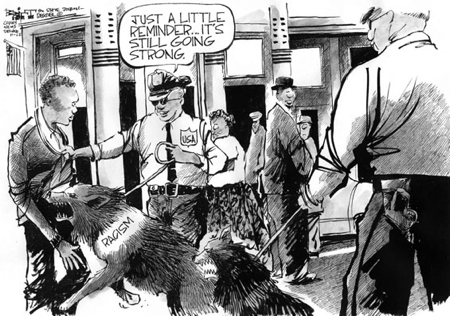CHAPTER 16
#2) According to the information given to us by the author, this situation does not simply rest on the idea of race, in fact, it being a issue of race was not actually pointed out to us. This problem seemly was not a issue of race, but of gender. By separating the girls into their races, the school seemingly wanted to keep it to an issue of race. They did not look further into the problem. By separating the two classes, it became an issue of race, whether or not the school wanted to admit it. "Lower class students" were seemingly the cause of this violence. Priveleges that the white girls have and the idea that the black girls are "guests" in their "home", really shows the White dominance that the girls do use over their Black classmates. It does not matter that it might seem to be a kindness that the girls are giving their Black counterparts, it still shows dominance. Separating them only adds to this, nor does it solve the problem of the school violence.
#5) Simply hearing about a situation of race does not enlighten anyone to the situation. We hear losts of things throughout our lives, but how many of us deeply think about the things that we hear in passing? It is important for a teacher to open her ears to situations of race and culture that occur within other schools, but it is also important for her to open her eyes, for similar situations could occur quite easily in her own school. Research, open discussions, situational problem solving and cultural education are some facts that students might benefit from when being introduced to a new culture or facing a problem of race. It is not enough to simply 'live together in harmony'. Teachers, parents and students alike have to work for acceptance and learn how to live and be surrounded by various races. One of the key ways is with critical understanding and education.
CHAPTER 17
#1) How can one address an idea of Whiteness in an institutional context as a minority when many of us do not even realize it as the majority? When attempting to do so, it might be helpful to put yourself in the other person's shoes. For example, as stated in Carr's chapter, one might imagine themselves as the only white person in an all black community or meeting. This might open your eyes to being alone, segregated, or looked at strangely for your thoughts or beliefs (p. 229). The best thing to do, when not understanding or able to picture something else, is to simply keep an open and accepting mind. We cannot understand fully until we place ourselves in eachothers shoes.
#2) We live in such a vastly different society that it is hard for White people not to be involved somehow in racial issues. Be it with yourself, friends, family, co-workers, someone somewhere has brought to your attention an issue of race. But simply being aware of the issue does not help. By being supportive of your friend or family member, offering advice, and/or acceptance can help that single person. But what of for the long run? We are so culturaly diverse in our city that it is important, our right, to be involved. How can our society live peacefuly and harmoniously if we do not support or accept eachother. Being involved in ralleys, petitions, discussions, and education systems are just a few ways that we can take the steps forward to an accepting community.
QUESTION for PAUL CARR
For many centuries, the White man have segregated, hurt, killed and claimed different races and cultures for our own benefit. Today, we see reprimand and compensation being given to the later generations of these peoples. I find that giving money does not really settle the differences between our culture and the ones we have harmed. What else can we do to show our regret and our acceptance of them now?
Wednesday, November 14, 2007
Subscribe to:
Comments (Atom)

